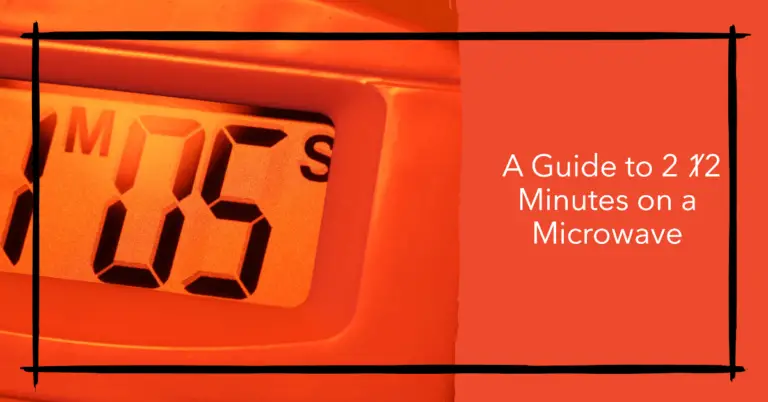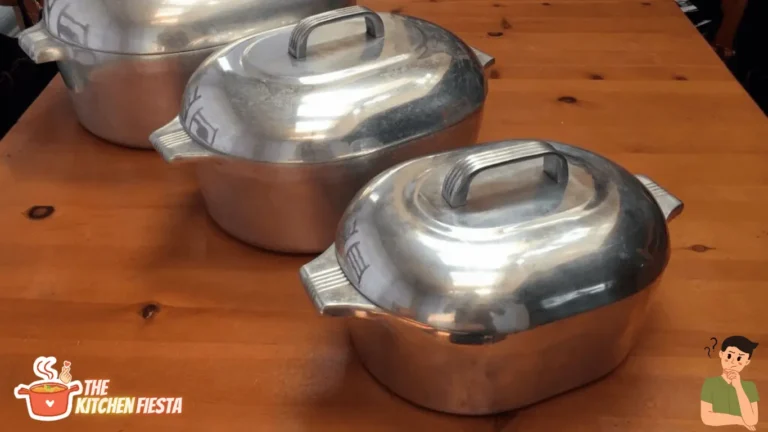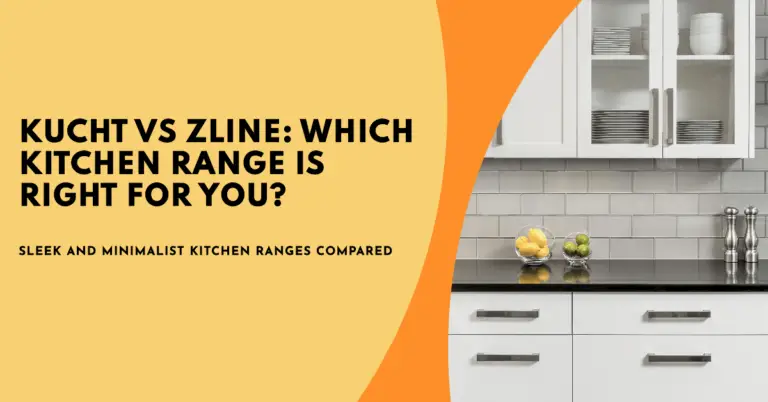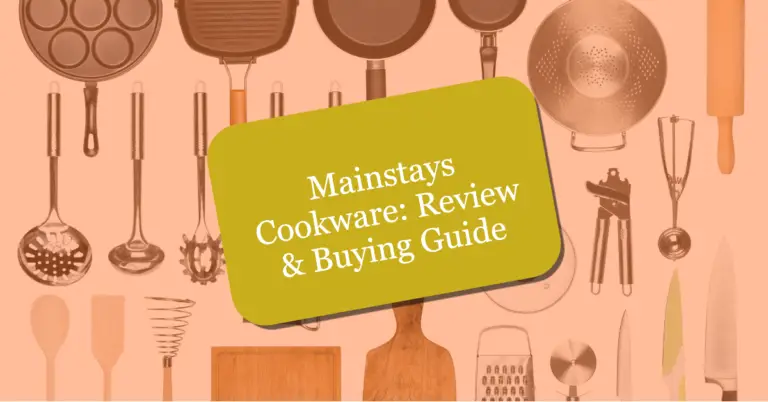Cookware Mastery Guide
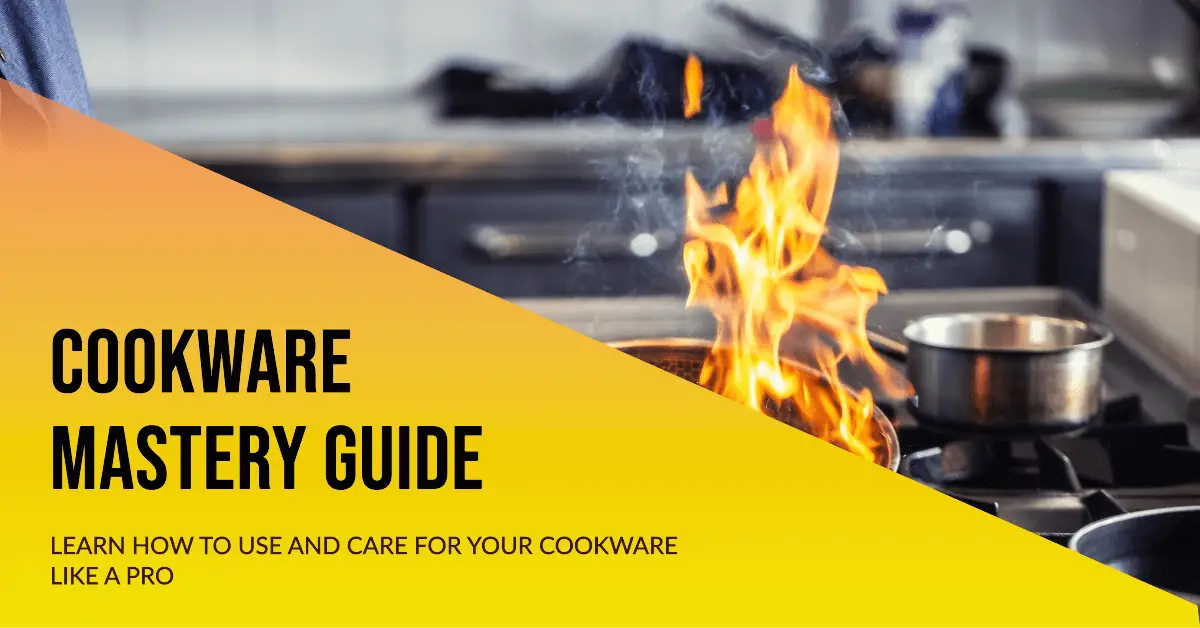
Having a well-equipped kitchen with quality cookware allows home cooks to expand their culinary skills and whip up delicious meals with ease. Cookware refers to the pots, pans, and other cooking vessels used on the stovetop or in the oven to prepare food. Whether you are outfitting your first kitchen or looking to upgrade older pieces, investing in durable, high-performing cookware suited for your needs is a worthwhile endeavor that will serve you for years.
This comprehensive guide will explore all aspects of cookware to make you a well-informed shopper and owner. We’ll begin by outlining the different types of cookware available and their ideal uses. Next, we’ll delve into the virtues and considerations of various cookware materials to help match pieces to your cooking. Proper cookware care and maintenance will then be discussed to get the longest lifespan from your purchases. Finally, recommendations for essential, versatile cookware selections will be provided.
With the information in this guide, you will understand the landscape of cookware options and why certain pieces are preferable. You’ll learn how to select and care for cookware tailored to your unique cooking habits and recipes. By becoming a savvy cookware consumer, you can confidently outfit your kitchen with high-quality tools to elevate your home cooking game. Let’s get started!
Types of Cookware and Their Uses
Cookware comes in various forms, each designed with specific shapes and sizes ideal for certain cooking applications. Understanding the purpose of each type of cookware will help match pieces to your routine cooking tasks.
Pots
Pots are vessels, often with two handles, used to cook liquid foods like soups, stocks, stews, rice, and boiled dishes.
- Saucepan – Feature rounded sides in sizes ranging from 1 to 4+ quarts. They are used for reheating sauces and sides, cooking grains like rice and quinoa, blanching vegetables, and preparing dishes using a moderate amount of liquid.
- Stockpot – Large pots with tall, straight sides designed to allow the cooking of bigger batches of soups, stocks, bone broths, and more without boilovers. Range from 8-12+ quarts.
- Soup Pot – Similar to stockpots but sometimes featuring a wider, sloped silhouette optimal for soup making. Ranging 6 to 12 quarts.
- Dutch Oven – Thick, heavy-duty pots with lids ideal for long braising, stewing, simmering, and cooking dishes from stovetop to oven . Sizes span 4-7+ quarts.
- Multi-Cooker – Electric all-in-one appliances (like Instant Pot) that pressure cook, slow cook, sauté, and more. Simplify weeknight cooking.
Pans
Pans include both frying pans for stovetop cooking and baking pans for oven use. Their variety of shapes suits different cooking methods.
- Skillet/Frying Pan – Characterized by low, gently sloped sides and long handles. Best for frying, sautéing, searing, and browning foods on the stovetop. Range from 8 to 14 inches across.
- Sauté Pan – Similar to skillets but often featuring straight rather than sloped sides and a lid. Excellent for quick cooking tasks requiring tossing and flipping. Span 2-5+ quarts.
- Wok – Bowl-shaped pan popular in Asian cooking. Sloped sides are optimal for stir-frying with oil-tossing ingredients. Available in flat or round bottom styles.
- Griddle Pan – A broad, flat cooking surface ideal for foods usually cooked on a grill, like pancakes, grilled sandwiches, burgers, and bacon.
- Grill Pan – Pan with ridges or a waffle pattern to impart grill marks and flavor when indoor grilling.
- Cake Pan – Round pans with straight sides designed for baking cakes. Primary sizes are 8, 9, and 10 inches.
- Loaf Pan – Shaped like a loaf of bread, with straight sides and bottom. For meatloaf, quick breads. Standard sizes range from 8 x 4 inches to 9 x 5 inches.
- Sheet Pans – Rimmed rectangular pans with flat bottoms. Used for roasting vegetables, baking cookies, toasting nuts, broiling fish, and more. Range from half sheet (13 x 18-inch) to quarter sheet sizes.
- Pie Pan – Round pans with angled sloped sides to promote even browning when baking pies and tarts. Standard diameters are 8, 9, and 10 inches.
- Muffin Tin – Comes in standard 12-cup size with 6 or 12 indentations for baking muffins and cupcakes. It can be made from metal or silicone.
- Ramekins/Souffle Dishes – Small round oven-safe dishes for baking individual souffles, pot de crèmes, mac and cheese, and other dishes. Sizes range from 4-6 ounces.
Specialty Cookware
Some unique cookware options that can expand and facilitate cooking include:
- Pressure Cooker – Uses steam pressure to rapidly cook foods that traditionally take longer, like stews, roasts, dried beans, and stock. It’s a great time saver. Sizes range from 4-8+ quarts.
- Slow Cooker – Also known as a crockpot, these countertop appliances cook foods low and slow all day to produce flavorful dishes with little hands-on time. Usually 1.5-7 quarts.
- Rice Cooker – Automated appliances that perfectly steam white, brown, and other rice varieties at the touch of a button. Simplify weeknight grains.
- Double Boiler – Features two pots, one sitting atop the other. The bottom pot holds simmering water that gently cooks food placed in the top pot using indirect heat. Critical for delicate dishes.
- Electric Griddle – Flat electric cooking surface with temperature controls ideal for pancakes, eggs, burgers, and grilled sandwiches to feed a crowd.
- Air Fryer – Uses circulated hot air to produce crispy “fried” foods like chicken wings, fries, and veggies with little to no oil—countertop convection oven.
- Electric Skillet – Self-contained electric skillet convenient for frying, sautéing, and simmering foods at the table. A removable pan facilitates serving.
Bakeware
Bakeware refers to pans intended for oven use. Materials that conduct heat evenly are ideal for uniform baking and browning.
- Round Cake Pans – Typically 8 or 9 inches, these straight-sided pans are designed for baking cakes.
- Square Cake Pans – Range from 8 to 13 inches, allowing you to bake square and rectangular cakes and bars.
- Loaf Pans – Rectangular pans with straight sides to bake meatloaves, quick bread, and savory loaves to be sliced. Usually 9 x 5 inches.
- Muffin Tins – Available in 12-cup standard size. The indents promote even rising and baking. It can be metal or silicone.
- Pie Pans – Angled sloping sides help fruit and custard pies achieve an evenly browned crust. Standard sizes are 8, 9, or 10 inches.
- Ramekins & Soufflé Dishes – Small round oven-safe dishes for baking individual soufflés, ramekins, custards, and other dishes. Sizes range from 4-6 ounces.
- Baking Sheets – Also called cookie sheets or sheet pans, these flat pans with rims allow air circulation for even baking. Quarter, half, and full sheet sizes.
- Cooling Racks – Raised wire racks allow air to circulate under baked goods for quicker cooling. Fit inside baking sheets.
- Bundt Pans – Fluted tubes mold ring-shaped pound cakes and other batter-based cakes. Volume sizes range from 9 to 15 cups.
- Springform Pans – Round pans featuring removable sides clipped into a base to release delicate or messy cakes. 8-10 inches wide.
- Tart Pans – Pans with fluted removable sides used to bake elegant tarts with straight edges and fluted shapes. Sizes range from 4-11 inches across.
Cookware Materials: Pros and Cons
Cookware comes in various materials, each offering its strengths and weaknesses. Consider the following virtues of each when selecting pieces tailored to your needs:
1. Stainless Steel
- Pros – Extremely durable, withstands high heat, oven and dishwasher safe, resistant to staining and pitting. Does not react with acidic foods. Many types contain aluminum or copper cores to improve heat conductivity.
- Cons – On its own, stainless steel is a poor heat conductor. Lower-grade stainless may warp. Can require seasoning like cast iron to become nonstick.
- Best for – All-purpose cooking, wet or dry, across all heats. Works for induction cooking—the long-lasting workhorse of a high quality kitchen.
2. Cast Iron
- Pros – Once seasoned, develop a natural nonstick patina. Unparalleled heat retention and distribution. Withstands incredibly high heat. Gets better with use over time. Inexpensive yet lasts decades. Adds iron to foods.
- Cons – Quite heavy, especially when lifting large pans full of food. Requires seasoning and specific care instructions. Too much moisture can damage the seasoning. Not suitable for alkaline foods. Slow to heat up and cool down.
- Best for – Sedate cooking tasks like sautéing, pan frying, and braising. Great for use in the oven and on grills for its heat qualities. Timeless for skillets, Dutch ovens, and griddles.
3. Enameled Cast Iron
- Pros – Provides all the heat retention and distribution benefits of cast iron with an enamel coating that prevents acid reaction and provides a nonstick cooking surface. Easy to clean. Vibrant colors liven the kitchen.
- Cons – Very heavy, though lidded pieces have handles. It is more prone to cracking or chipping than bare cast iron. Enamel can stain or discolor over time. On the pricier end of cookware.
- Best for – Dutch ovens, grill pans, skillets where you want cast iron heating but don’t want to deal with seasoning and reactivity. Great for cooking acidic foods.
4. Carbon Steel
- Pros – Similar to cast iron in terms of heat qualities and nonstick potential when seasoned but much lighter in weight. Makes an excellent wok and crepe pan. Generally affordable.
- Cons – Prone to rusting and requires seasoning and similar care to cast iron. Too much acid or moisture can damage the seasoning. It won’t work with induction. It needs time to heat and cool.
- Best for – In place of cast iron when weight is a concern. Best for woks, crepe pans, and grill pans.
5. Copper
- Pros – Unparalleled heat conductivity, resulting in the most responsive temperature control. Can prepare very finicky dishes successfully—highly prestigious material.
- Cons – Expensive, requires meticulous cleaning by hand. High maintenance. Reactive to certain foods. They are often lined with tin or stainless steel. Unlined copper pans need polishing.
- Best for – Top-of-the-line cookware for experienced cooks. It is beneficial for cooking sugar and delicate dishes requiring precise temperature regulation.
6. Aluminum
- Pros – Excellent heat conductor, lighter weight than many cookware materials. It is often used in multi-ply cookware bonded with stainless steel for optimal heat distribution—generally affordable cost.
- Cons – Reactive to acidic foods. Likely to warp. Can leach into certain foods. Requires handwashing. It is best when layered in cookware rather than on its own.
- Best for – Clad or multi-ply cookware to improve stainless steel’s conductivity. It is budget-friendly but has lower cooking performance than other metals.
7. Ceramic/Ceramic-Coated
- Pros – Provides nonstick cooking surface while free of concerning chemicals used in traditional nonstick coatings. Withstands high heat. Durable if cared for properly.
- Cons – Prone to shattering if subjected to rapid temperature changes or direct high heat. Requires gentle handwashing. Nonstick property degrades over time.
- Best for – Nonstick egg and pancake pans, simmering sauces. For moderate rather than high-heat cooking tasks. Avoid metal utensils.
8. Silicone
- Pros – Lightweight, flexible, and easily collapsible. Withstands heat up to about 400°F. It won’t react with acidic foods. Prevents sticking. Easy to clean and store.
- Cons – Not appropriate for high-heat cooking or direct flame. Can stain or absorb odors—questionable long-term durability with regular use.
- Best for – Folding steamers, muffin tins, baking mats, and pot holders. Best suited for oven or low stovetop heat rather than direct cooking.
9. Glass
- Pros – Allows you to monitor food while cooking. Typically shatter-resistant. A nonporous surface won’t absorb odors or stains. Oven and microwave safe. Affordable.
- Cons – Not suitable for stovetop use, prone to shattering. Heavier than other materials. Heat distribution is uneven. Not appropriate for high heat broiling.
- Best for – Oven-to-table baking dishes, cake pans, loaf pans, and other ovenware like lasagna dishes where you want to see the food cooking.
10. Nonstick Coatings
- Pros – When intact, provide a slick release surface for cooking delicate foods. It requires little to no oil. Make cleanup easy.
- Cons – Scratches and degradation over time compromise nonstick ability. Limited high heat tolerance. Concerns over the toxicity of coating materials at high heat.
- Best for – Lower heat tasks like cooking eggs, pancakes, and fish where food release is important. Gentle hand washing preserves coating.
How to Select the Right Cookware?
With so many cookware options on the market, selecting pieces best suited for your cooking needs and habits can be daunting. Keep the following criteria in mind when evaluating cookware to purchase:
1. Your Budget
- Cookware is an investment that lasts for years when properly cared for. Paying more upfront for quality materials generally rewards you with better longevity and performance. However, budget-friendly options like uncoated aluminum still cook perfectly well. Set realistic expectations for pieces at lower price points in terms of durability and lifespan.
2. Types of Cooking You Do
- Consider what cooking tasks you do on a regular weekly basis and choose cookware accordingly. Specialty pieces like woks or double boilers don’t make sense if you don’t utilize them. Focus on general-use pans and pot sizes that suit your typical recipes. You can always add specialty items later.
3. Suitability for Your Cooktop
- Ensure any cookware you select works for your stove type. Materials like stainless steel and enameled cast iron are compatible with gas and electric ranges. Some materials like aluminum and copper best suit gas. Select induction-ready cookware if you have an induction cooktop.
4. Your Skill Level
- Beginner home cooks do best, starting with user-friendly options like stainless steel or ceramic nonstick pans. Advanced users will appreciate the nuanced heat control copper or multi-ply stainless offers. Match user skill level to cookware type until you refine your technique.
5. Weight of the Cookware
- Heavier-bottomed pans typically provide better heat distribution, especially for browning and searing. However, hefty cookware can be difficult to maneuver when full of food. Seek a middle ground based on your needs or abilities. Consider handles that aid in lifting heavy pans.
6. How You Want to Use It
- Are you looking for a nonstick surface for cooking delicate eggs? Or are you eager to take on seasoning cast iron for next-level homemade steaks? Envision your end-goal meals and choose cookware that delivers those desired results. Let your recipes guide your purchases.
7. Frequency of Use
- Cookware you reach for daily merits investing in higher tier materials that withstand constant use, like stainless steel clad pots. Items used only for occasional meals or desserts may only necessitate bare aluminum or glass bakeware.
8. Size of Household/Number You Cook For
- Single folks can get away with smaller pans and pots and minimal pieces. Families and those who meal prep in bulk require larger, more plentiful cookware. If you cook for crowds, consider multiples of items like baking sheets.
9. Aesthetic Appeal
- While less important than function, having cookware you find visually pleasing makes cooking more enjoyable. Luckily, most quality cookware also exhibits attractive, timeless styling. Choose colors and designs that complement your kitchen decor.
By considering these factors when selecting cookware, you’ll assemble a collection tailored to your unique needs that empowers you with the right tools for cooking success over the long term.
Proper Care and Maintenance of Cookware
Caring correctly for your cookware ensures it retains optimal cooking performance and lasts for years. Follow these best practices for maintaining various cookware types:
General Care Tips
- Clean promptly after use – Don’t let food residue dry and stick. Wash by hand or dishwasher.
- Avoid abrasive scouring pads/cleansers – They can damage finishes. Opt for soft sponges and nylon brushes.
- Dry thoroughly after washing – Prevent water marks on stainless steel by wiping it dry. Air dry other materials.
- Don’t soak cast iron or carbon steel – Excess moisture can compromise seasoning and lead to rust.
- Allow pans to fully cool before washing – Prevent warping from thermal shock.
- Store cookware neatly – Prevent scratches, dents, and other damage by nesting or hanging pots and pans.
Cast Iron and Carbon Steel Care
- Season before first use – Create a protective patina by coating it with a thin oil and heating it in the oven or stovetop. Repeat periodically.
- Avoid soap when cleaning – Soap can strip seasoning. Wipe clean with a soft sponge and hot water, or use coarse salt for stuck bits.
- Dry thoroughly and rub with oil – Prevent rusting by ensuring bone dry pans after washing. Apply a skinny oil coat.
- Avoid soaking – Water sitting on bare iron can lead to rusting. Always dry promptly after washing.
- Use metal utensils sparingly – Scraping can remove seasoning. Opt for wood or silicone instead whenever possible.
- Don’t let pans sit wet – Ensure pans are dried thoroughly after every wash to prevent rust spots from forming.
- Re-season as needed – If food starts sticking, the season has likely worn thin in spots—Re-coat the pan inside and out with fresh oil and heat to bolster.
- Cook acid foods sparingly – Acidic things like tomatoes can react with seasoning, so use enameled cast iron for predominantly acidic cooking.
- Store oiled – Apply a light coat of oil before storage to protect seasoned pan surfaces from oxidizing.
Enameled Cast Iron Care
- Avoid metal utensils – They can chip porcelain-coated surfaces. Use wood, silicone, or plastic instead.
- Don’t preheat empty – Rapid temperature change can crack enamel. Continually heat with oil or food already in the pan.
- Avoid drops and dents – Heavy pieces can crack if dented. Use both hands when lifting empty.
- Clean promptly after cooking – Enamel is porous and can stain if not cleaned after cooking foods with lots of pigment.
- Check for small cracks – Cracks in enamel provide an entry point for moisture that can lead to rust. Discard heavily damaged pans.
- Use a pan liner for baking – Foil, parchment, or a silicone liner prevents enamel from staining or reacting to acidic ingredients.
- No metal scrubbers – Abrasive pads can damage the enamel surface. Stick to non-scratch sponges or brushes.
- Don’t slide on the stovetop – Dragging pans across burners or grates can remove the enamel. Lift cookware when moving.
Copper and Ceramic Care
- Hand wash only – Copper and ceramic shouldn’t go in the dishwasher, where harsh detergents can degrade finishes.
- No drastic temperature changes – Sudden temperature spikes can compromise delicate materials. Always preheat the pans gradually.
- Avoid cooking on very high heat – Excessive heat damages the finish over time. Cook at medium temps whenever possible.
- Use non-metal, non-abrasive tools – Metal utensils or scouring pads/cleaners can scratch. Opt for wood, plastic, or nylon instead.
- Dry thoroughly – Prevent water spots on copper by ensuring it’s fully dry after every wash.
- Wash gently by hand – Rubbing fragile finishes vigorously leads to premature breakdown. Use a soft sponge and minimal pressure when washing.
- Use baking soda or lemon for stains – For hard water or food marks, make a baking soda paste or rub with cut lemon to gently lift stains without damage.
- Store carefully – Ensure ceramic and copper pieces are protected from dents or scratches when stored using padded containers or dividers.
Stainless Steel Care
- Use non-chlorine cleanser if needed – Chlorine can react with stainless steel and cause pitting. Use a mild, non-chlorine cleaner for stubborn spots.
- Clean grain directionally – Always scrub in the direction of brushed finish lines, not across them, to prevent scratching.
- Remove water marks with vinegar – Marks left from mineral deposits in water can be removed by rubbing with white vinegar using a soft cloth.
- Prevent graying or rainbow patina – Using the pan on too-high heat can cause cosmetic discoloration. Cook at proper temperatures.
- Use oil on the cooking surface – Seasoning with oil helps prevent food from sticking like cast iron for stainless steel lacking a nonstick finish.
- Rinse rice, pasta, and grains – Starchy foods can leave a stubborn film. Rinse thoroughly after cooking.
- Avoid cooking acidic food for long periods – Acidity can compromise stainless steel over time, leading to pitting. Cook acidic foods in enameled or ceramic cookware.
With proper care matching the needs of each specific cookware type, your pans and pots will deliver reliable cooking performance for many years, whether everyday workhorses or specialty pieces used only occasionally.
Recommended Essential Cookware Pieces
Home cooks can benefit from several core pieces of versatile, quality cookware. Here are some recommended essential pans and pots to consider:
10 or 12-inch Cast Iron Skillet
A well-seasoned cast iron skillet can tackle almost any stovetop cooking task, from frying eggs to searing steaks beautifully. Cast iron provides unbeatable heat retention and distribution once heated. Opt for 10 or 12 inches, depending on cooking amounts. It can last for generations.
8 or 10-Inch Nonstick Skillet
A dependable nonstick skillet allows you to cook delicate foods like eggs, fish fillets, and pancakes cleanly without sticking. Opt for a durable, nonstick surface like ceramic. Best for gentle, low to medium heat cooking to preserve the coating. Easy to clean.
3 or 4-Quart Sauté Pan
A mid-sized sauté pan with a lid provides the ideal stovetop vessel for quickly cooking meats, vegetables, and other ingredients while containing splatter. Sloped sides make tossing and flipping easy. Great for weeknight one-pot meals.
6 or 8-Quart Stockpot
It is essential for preparing stocks, soups, pasta, and blanching vegetables. A spacious 6 to 8 quart size equips you to cook sizable batches for meal prepping or feeding a crowd. Tall, straight sides prevent boilovers.
5-Quart Dutch Oven
Dutch ovens are incredibly versatile for braising, stewing, simmering, and baking everything from chili to bread. Choose enameled cast iron or stainless steel. A size of 5 quarts lets you cook small roasts or a few chicken breasts.
Quarter Sheet Baking Pans
Rimmed quarter sheet pans (13 x 18 inches) have many oven uses, from roasting vegetables to baking cookies or fish. They are made from aluminized steel or other heat-conducting metals. Nestle two together in the oven as they’re relatively thin.
Set of Mixing Bowls
You can always have a few bowls on hand for prep work, tossing salads, holding ingredients, and mixing when cooking. Durable stainless steel nesting sets provide an indispensable kitchen workhorse.
9 x 13-Inch Baking Dish
This large rectangular glass or ceramic baking dish spans between a casserole and a sheet pan. Ideal size for roasting vegetables, meatloaf, and baking hearty casseroles. Oven-to-table versatility.
Half Sheet Pans
also called sheet pans or cookie sheets, come in standard 18 x 13-inch sizes. Aluminum or aluminized steel evenly browns cookies, roasts veggies, and more. Their low sides promote air circulation. Rim keeps oil or juices contained.
By investing in these 10 core pieces encompassing a range of cooking vessels and purposes, you establish a strong cookware foundation that can easily tackle an array of everyday cooking tasks. Build your collection outward from here as your skills grow. Happy cooking!
Conclusion
Cookware may not be the most glamorous kitchen purchase, but having quality pots and pans makes cooking more enjoyable and successful. This guide provided you with in-depth knowledge of the landscape of cookware options, from material virtues to pan types. You now understand how to select pieces that align with your cooking needs and style. Investing in cookware suited for the meals you cook most often removes hassle and frustration from the equation.
With your newfound cookware understanding, you can shop with discerning eyes for your perfect pots and pans. When properly cared for, seek out quality materials and construction that withstand decades of use. Consider how each piece’s size, weight, and purpose fits into your collection to prevent redundancy. Follow the care instructions for your chosen materials to maximize longevity.
While cookware can seem mundane, remember that in the right pieces for you, it becomes a treasured vehicle for providing sustenance and comfort to yourself or your loved ones. The meals made in well-loved pots and pans over the years often become some of our most cherished food memories. Choose cookware that empowers you to create delicious food and lasting memories. Happy cooking!

